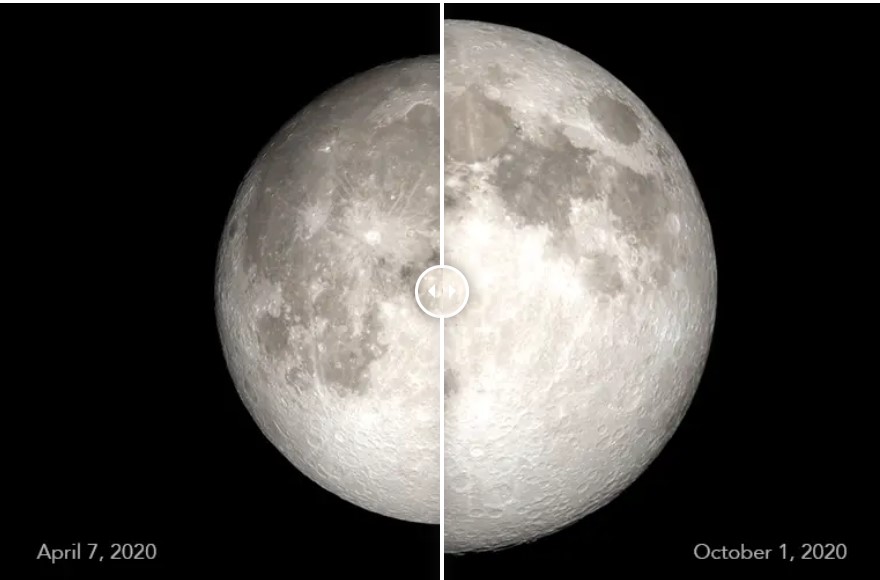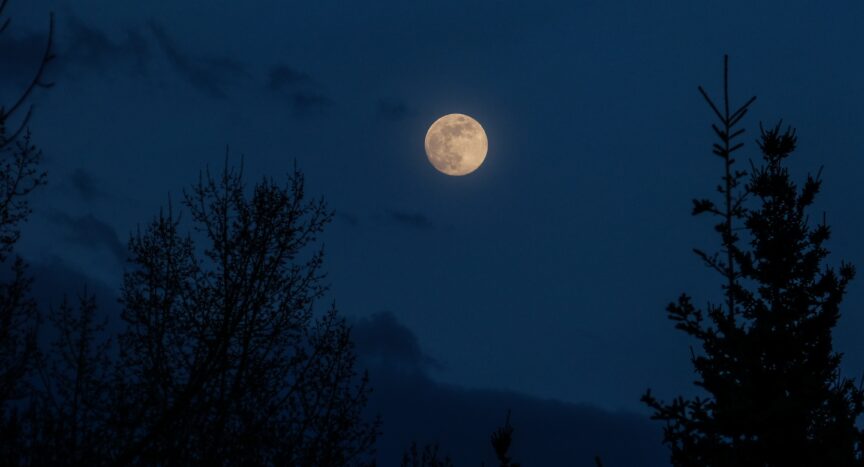Stargazers were able to Witness Rare Blue Super Moon in August 2023. The next blue super moon will be in 2037, so this one was a very rare sighting.
The night sky has long captivated the imagination of humanity, serving as a canvas for countless stories, myths, and dreams. The blue supermoon stands out as a rare and awe-inspiring spectacle among the many celestial events that grace our night sky. This celestial phenomenon combines the magic of a supermoon and the enchantment of a blue moon, creating a sight that has intrigued astronomers and stargazers for centuries.
People worldwide waited with anticipation to see this celestial spectacle for themselves in August 2023. Blue supermoons are rare – the last one was in 2009 – and only occur when the pattern of days in a calendar year results in 13 full moons instead of the usual 12. In this article, we will delve into the intricacies of the blue supermoon, exploring its origins, significance, and the wonder it brings to those fortunate enough to witness it.
Although special and something of a rarity, much scarcer than sportsbooks offering free bets for no deposits, no special equipment is required to see a blue supermoon. NASA tells us that your eyes are all that is necessary and, of course, clear skies because the moon appears much more prominent than usual. Simply look into the sky in a southerly direction, and the blue supermoon will be there for all to see.
What is a Blue Supermoon?
To understand the blue supermoon, we must first break down its components: the supermoon and the blue moon.
A supermoon occurs when the full moon reaches its closest point to Earth in its elliptical orbit. This phenomenon is due to the moon’s slightly elliptical path around our planet, causing its distance to vary. When the moon is at its perigee, the point closest to Earth, it appears larger and brighter in the sky. This proximity can make the moon appear up to 14% larger and 30% brighter than a regular full moon.
Blue Moon: A Calendar Quirk
On the other hand, a blue moon is not defined by its colour but rather by its rarity in the calendar. Traditionally, a blue moon is the third moon in a season with four full moons instead of the usual three. However, a blue moon is commonly considered the second full moon in a calendar month with two full moons, which occurs approximately once every 2.7 years. This is because the moon’s phases take 29.5 days to complete, or 354 days for 12 cycles, while our calendar year has 365/366 days in it.
This phenomenon led to the famous phrase “once in a blue moon.”

Not-So-Super Moon vs. Supermoon
Credit: NASA’s Scientific Visualization Studio
The Blue Supermoon Phenomenon
The blue supermoon arises from the alignment of a supermoon and a blue moon. When a supermoon and a blue moon coincide, it creates an extraordinary lunar event that’s both visually striking and steeped in celestial wonder. This cosmic alignment is relatively rare, with the next blue supermoon after this one occurring in 2037.
Throughout history, the moon has held a special place in the hearts and minds of people from all corners of the Earth. Various cultures have woven stories, myths, and legends around the moon, attributing to it mystical powers and significance. With its unique appearance and rarity, the blue supermoon has often been regarded as an omen, a harbinger of change, or a symbol of transformation in these cultural narratives.
Supermoons, in general, have been associated with heightened emotions and unusual events. The blue supermoon, a combination of the supermoon and the blue moon, can intensify these superstitions, making it a topic of fascination and sometimes even apprehension.
Some believe they can influence human behaviour, leading to increased creativity and crime rates. The term “lunatic” refers to a person who is seen as being dangerous, crazy, or foolish, and it derives from the Latin lunaticus, which means “of the moon” or “moonstruck.” Scientific studies have found no links between full moons and increased crime figures.
Scientific Interest and Research
While the blue supermoon is a stunning sight for skywatchers, it also piques the interest of scientists and researchers. The moon’s appearance during a blue supermoon offers a unique opportunity for astronomers to observe and study its surface in greater detail. The enhanced brightness and clarity allow for more precise measurements and data collection, aiding in ongoing lunar research.
The gravitational effects of a supermoon, when the moon is closest to Earth, are more pronounced. This can lead to higher tides, known as “king tides,” which impact coastal areas. Scientists use supermoons, including blue supermoons, to study these tidal forces and their implications for coastal ecosystems and climate patterns.
The Blue Supermoon in Modern Times
In today’s world, the blue supermoon is not just a phenomenon for astronomers and folklore enthusiasts. Thanks to technological advancements and the ease of sharing information, this celestial event is accessible to a global audience. Social media platforms, live streams, and photography have allowed people worldwide to witness and celebrate the beauty of the blue supermoon.
In an era where environmental concerns are at the forefront of global consciousness, the blue supermoon reminds us of the delicate balance of our planet and its connection to the cosmos. With its influence on tides and ecosystems, the moon highlights the interconnectedness of Earth and the wider universe, underscoring the importance of preserving and protecting our planet.
The blue supermoon is a rare and enchanting event that has captured humanity’s fascination for centuries. Its visual splendour, cultural significance, and scientific value make it a celestial spectacle that transcends boundaries and connects people across the globe. As we gaze upon the blue supermoon, we are reminded of the wonders of the cosmos and the enduring beauty of the night sky, a source of inspiration and wonder for generations past and those yet to come.
Here is a video on what makes a Supermoon Super.







